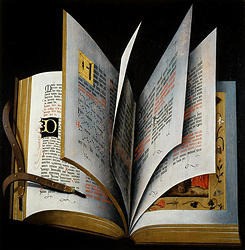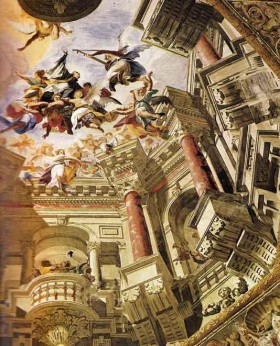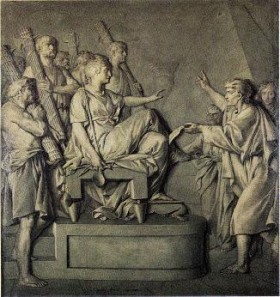A trompe l'oeil (from the French "tromper", deceive, and "oeil", eye), is a painting technique based on the use of light and shade and perspective, which reproduces reality as to appear an illusion of reality to the spectator's eyes.
The study of the point of view of the observer with respect to the painting is essential. Therefore, immediately after choosing the surface where the intervention has to be carried out, the artist will have to identify the privileged points of view, i.e. the points of view from which that area is generally observed. For example, if you decide to place the painting on the wall of a room that is in front of the entrance door, you will create the painting in order to "deceive" the visual perception of the person who enters the room. If the artist wants to create an illusion of perspective, he will also have to place the vanishing point of the pictorial image at the point of view of the observer. The optical illusion is particularly effective if the observer is at the centre of the room, at the vanishing point.
In order to achieve the maximum pictorial illusion, it is essential, to take into account the real light sources of the environment, their nature and their direction, so that the represented subject appears as if it were lighted by those lights.


